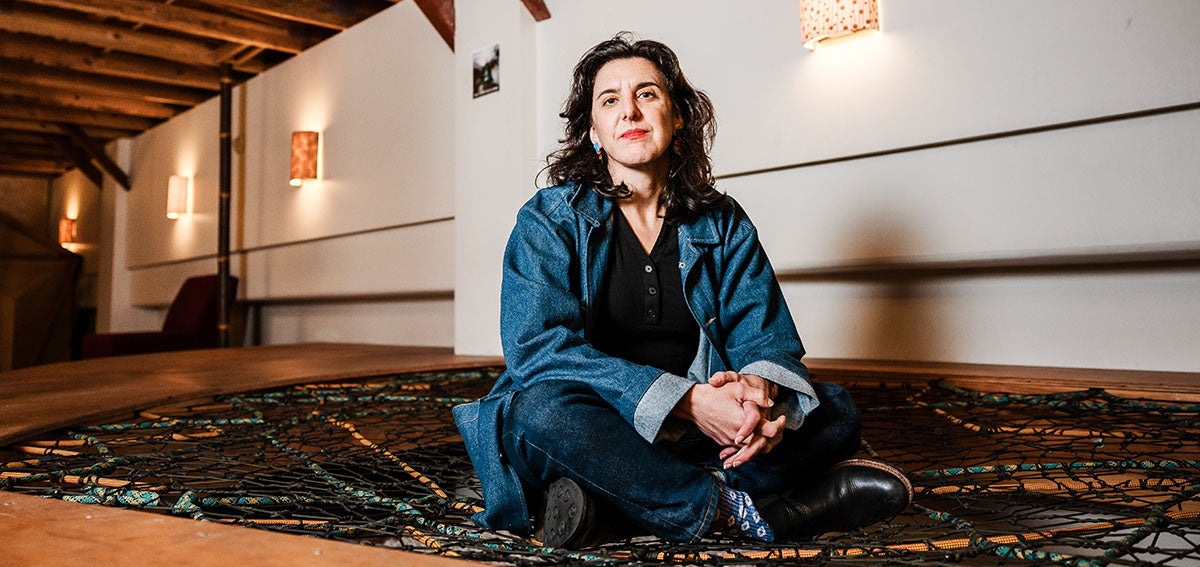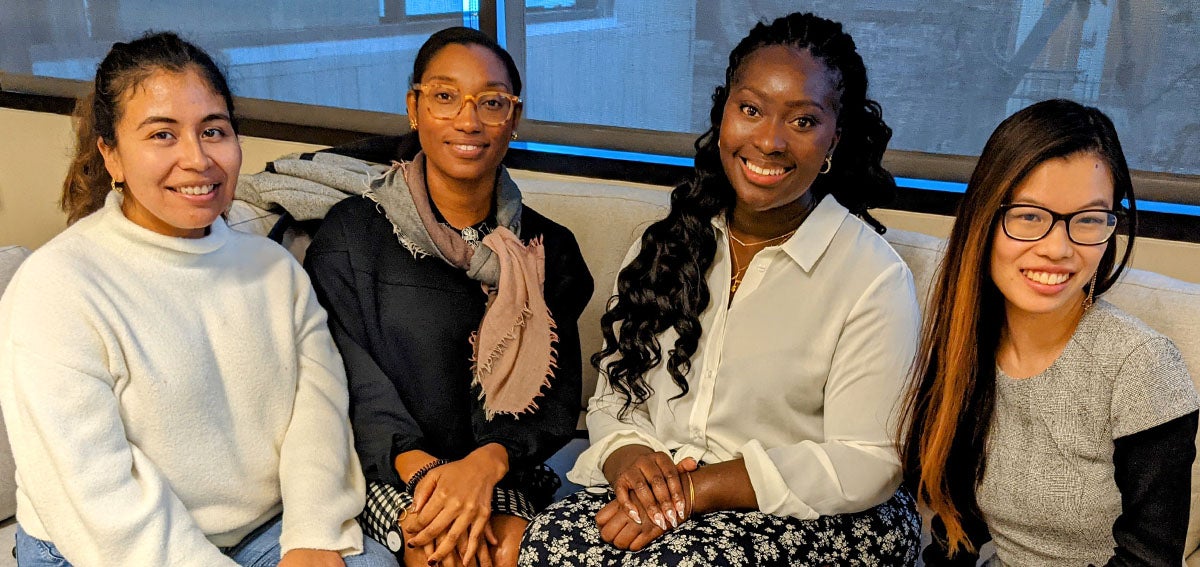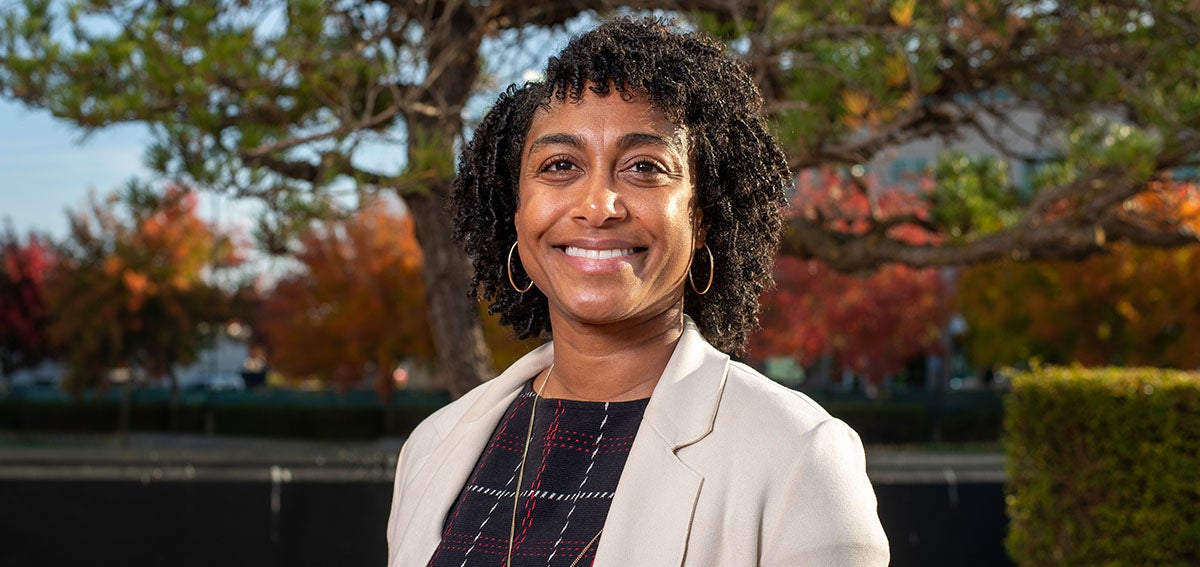
For health care systems that rigorously apply themselves to the essential and challenging work of achieving health equity, there can be some learning curves.
“If you throw out terms like DEI [diversity, equity, and inclusion], implicit bias, and racial equity, a lot of people on our campus probably don’t know what they mean,” said Sabreen White, MBA, a program director at Riverside University Health System (RUHS), and a leading member of the organization’s Equity and Diversity Advocacy Taskforce. “So, when we started our taskforce, we agreed that education was going to be a top priority.”
The education that White is referring to entails highly specialized training programs that aim to dismantle racism and develop a staff grounded in the principles and practices of DEI and belonging. Having trained more than 150 staff members on implicit bias, RUHS is now deliberating on how best to expand training so that it can be offered to its entire team of 8,000 workers.
The system — which includes county public health and behavioral health services, 13 community health centers, and a public teaching hospital with more than 60 hospital-based primary and specialty care clinics — is one of Riverside County’s largest employers. RUHS’s size and the diversity of services it offers make achieving health equity a complex process. “There’s so much information out there, it’s very difficult to decipher what will work for our organization,” said White.
As a member of the Racial Equity Community of Practice, White turns to 70 safety net peers — and they to her — for guidance on and support with uprooting the structures that enable devastating health inequities. The Community of Practice was formed in 2022 by the Safety Net Institute (SNI) as an 18-month learning and problem-solving collaborative funded by the California Health Care Foundation. Within the collaborative, representatives of 12 California public health care systems meet regularly, in person and virtually, to share ideas and brainstorm ways to accelerate their equity work.
The objective is to maximally benefit patients, staff, and the communities of color and historically marginalized groups that their systems primarily serve, White said. “As a county hospital, it’s nice to look at other county hospitals to see, ‘What are you doing up north?’ Or ‘What are you doing in San Diego?’ We can piggyback and learn from each other.”
Peers Inform and Inspire
During a recent Community of Practice session, White was impressed when UCLA Health shared that over an eight-month period it educated and trained more than 27,000 staff members on equity, diversity, and inclusion. UCLA Health broke down how they did it and supplied the other systems with training modules, resources, and links.
Geoffrey Leung, MD, the public health officer for Riverside County who is cochair of the RUHS equity task force and a member of the collaborative, found inspiration in this peer-to-peer learning experience. “If you hear that one group can do it, and they’re your peers, and they have the same challenges that you do, then you’re thinking, ‘You know, we should be able to do that too,’” said Leung, who also is an alumnus of the CHCF Leadership Program.
Such system-to-system exchanges of reliable information and lessons learned on the road to health equity offer a number of advantages. Systems can move more quickly, use fewer resources, and build greater confidence in the process and its potential results by applying methods or programs that have been proven successful by their peers.
“If another county agency has already figured out certain areas of DEI or has the outcomes that we’re looking for, there’s no need for us to re-create that on our own,” said Brandon Jacobs, MHA, the RUHS deputy director for quality management in behavioral health and a member of the system’s equity task force.
And those efficiencies could yield real improvements in quality of care, especially from the standpoint of equity. With millions of Californians living in underserved communities cared for by systems participating in the Community of Practice, any progress in reducing disparities more quickly may provide patients with more timely access to trusted care.
DEI Grand Rounds
At the same time as representatives from RUHS were learning from their peers, White said, “Our peers wanted to learn from us.” This was especially apparent in how White’s colleagues received the news of the RUHS program for DEI grand rounds.
At Riverside, grand rounds are hour-long online forum events in which experts from the health system and community at large discuss disparities data, wade into lessons from DEI efforts, and highlight potential improvements. Topics have included the human tragedy of health inequities, as well as a three-pronged approach to tackling them.
Immediately after presenting the program to her Community of Practice colleagues, White received inquiries from three other hospital systems seeking more information. Some were interested because it appeared to be a relatively easy and effective way to educate many staff members. Others liked the short turnaround time — sometimes, it takes just a few weeks to go from planning to implementation, White said.
Aimed at educating staff and leadership, including top RUHS executives, the DEI grand rounds also serve to “foster collaboration and partnership opportunities,” said Vikram Kumar, MD, MBA, chief health information officer at RUHS, who cochairs the equity task force and is a member of the collaborative. Kumar spearheaded the grand rounds program, which has had 400 attendees so far.
How did RUHS attract such large numbers of nonphysician staff to attend the program? After White’s presentation, that question was on the mind of Minako Watabe, MD, MSc, chief medical officer at Ventura County Medical Center and Santa Paula Hospital, codirector of their DEI advisory group, and a member of the Community of Practice.
Watabe leads Ventura’s health equity grand rounds and is eager for more residents, nurses, registration and transport staff, technicians, nutritionists, and others to attend the forums.
“From the time a patient walks in until the time they are discharged, it’s important for everyone to understand what the history of racism in health care looks like and focus on health equity when interacting with patients,” said Watabe.
White invited Watabe and representatives of Arrowhead Regional Medical Center, San Mateo Medical Center, and other public health systems to a weekly meeting of the RUHS internal equity task force. At the meeting, White and her colleagues explained to their guests how they designed, executed, and promoted the DEI grand rounds program, including how they selected speakers and topics.
Targeted Universalism and Traction
RUHS cares for a diverse, fast-growing population in a medically underserved and lower-income community in which people face elevated risks of health disparities and poor health outcomes. Since its founding in 1893, RUHS has championed health equity, Leung said.
“By our very identity as part of the safety net, we have been working on disparities and caring for the most vulnerable populations and complex individuals — those who are uninsured or underinsured or cannot get care elsewhere — since we’ve existed,” said Leung.
Now, after decades of taking aim at the causes of disparities, RUHS has begun to apply a novel framework for thinking and strategizing about this work — the concept of targeted universalism.
The move began after a Community of Practice meeting in which SNI’s expert adviser, the National Equity Project, led a presentation on the subject. During the session, which was described as “eye-opening” by multiple attendees, experts explained that approaching equity work through policies or interventions that will impact one group, often excluding others, has historically been favored over the universalist approach, which sets an equity goal for all while ignoring critical disparities among subgroups.
In contrast, targeted universalism marries the positive attributes of both approaches with an overarching goal for everyone along with targeted strategies for individual groups based upon their needs and circumstances. In doing so, targeted universalism aims to create greater belonging and buy-in.
Shortly after the collaborative meeting, Jacobs was excited to implement the concept when sending out department-wide emails and workflows about policy and procedure changes. Instead of framing these communications as “we’re doing this to address this one population or this one problem,” Jacobs said, he framed it as “Let me tell you how this is going to benefit everyone.” Now, Jacobs is a firm believer that “a lot of good can come out of targeted universalism.”
Callisha Mays, MPH, RN, the RUHS director of ambulatory quality and a member of the equity task force and the Community of Practice, also embraces the approach. “If you really have concern for humankind,” she said, “then this equity work is important, and we don’t want to leave anyone behind.”
As RUHS views more structures and practices through a health equity lens, it is exploring how targeted universalism might increase the likelihood of achieving its goals. In pursuit of equity, Riverside has in recent years adopted disparity reduction programs around blood pressure, cancer screenings, and opioid abuse; launched HeRCARe, which helps people experiencing high-risk pregnancies; established a disparities workshop and retreat; and published a disparities-themed internal magazine. Now the team is looking at how targeted universalism could become a framework for these established efforts.
White appreciates the RUHS executive team’s “100%” support and encouragement of the equity taskforce. “Once we complete an equity event, we’re working on the next one,” she said. “As long as we keep this momentum going, I think we can definitely make a difference.”
This article was adapted from a blog post that was published on March 14, 2023, by the California Health Care Safety Net Institute. It is reprinted with permission.
Authors & Contributors

Aisling Carroll
Aisling Carroll is a Bay Area–based freelance writer and former journalist who covers health care, digital health, hospitals, and the patient-doctor relationship. Her work has been published in Stat News, HuffPost, Business Insider, Congressional Quarterly, and others. Carroll received a bachelor’s degree in political science from UC San Diego.





